 By:
Joe Green
By:
Joe Green
Table of contents

We are glad that you are here with us and have been growing cannabis. Now want to know when is the right time to harvest cannabis. The moment to reap what you have sown, the reward of your hard work, a labor of love, we hope.
Cannabis cultivation is not just watering cannabis plants. Many factors influence the growth and development of your plants. Luckily your experience and familiarity with the cannabis plants will grow too. I know a couple of master growers who have developed a sixth sense for the plant. They can almost predict the future while looking at a fan leaf and know the optimal harvest time to a tee creating the most gorgeous and powerful buds. (#lifegoals)
So keeping a close eye on your cannabis plants and knowing what to look for can make all the difference in determining the right time to harvest!
Monitor the entire plant and check the lower buds. Are they not too low, so they don’t get wet from the irrigation system? Learn to read the leaves and check the underside, as some monsters hide under the fan leaves. If you care for your cannabis plant, check in daily or once in a few days to develop a routine that you can follow to the letter. This will give you an overview to see if something is off and where / what to look. Practice makes perfect!
Don’t be afraid to investigate further; if something is off but can’t find it straight away, cut up a large fan leaf to inspect it thoroughly. Like the buds, you can sample buds to look for evidence of insects, mold, or bud rot. Better safe than sorry; if you catch a “plague” on time, you can control the damage to just a few plants, Saving your harvest!
The naked eye is not always good enough for a good inspection. So get a nice magnifying glass, and while you are at it, a lab coat too. You will not only see more but look very professional while doing so.
The answer may vary depending on who you ask, but most experts agree that the ideal time to harvest is when 50-70% of the cannabis trichomes are ready.
Some mature trichomes are completely yellow; a few can remain milky white, while others have amber trichomes. You must wait until 70% of the clear trichomes have turned into solid amber trichomes to obtain higher amounts of CBD & THC. It’s the time when many growers harvest their cannabis plants.
The curing stage of the harvested cannabis plant is an art form that growers have perfected over the years. The goal of curing is to preserve the potency and flavor of the buds while reducing the risk of mold or pest infestation.
The most important step in drying cannabis is carefully controlling humidity and temperature levels. If the buds are too dry, they will lose their potency and flavor. They will be susceptible to mold and pests if they are too moist. The ideal relative humidity for curing cannabis is between 60-65%. The buds should also be stored in a dark, airtight container such as a mason jar. The jars should be opened daily to allow the buds to “breathe”. Depending on the desired results, the curing process can take anywhere from two weeks to two months. By taking the time, and we can not emphasize that enough, hasting now when you have invested 10 to 12 weeks already is no gain. Take your time to cure your harvest; this way, you be sure that your Cannabis buds are of the highest quality.
Just in case you do not know it yet, here is a summary of the anatomy of the whole plant so you know which parts to focus on when determining harvest time.
The fan leaves of a weed plant are so conspicuous that they have become the universal symbol for weed. What the layman does not know, however, is that the leaves contain deficient levels of THC.
They can provide good indicators for the plant’s maturity, but they are mostly thrown out after trimming.
This part of the plant contains more THC than the leaf. For this reason, the stem of a cannabis plant is used as an additive for concentrates and tinctures.
This is inarguably the most important part of a marijuana plant. Most farmers harvest it, which is the best indicator of when to harvest cannabis. Especially in the final days, keep a close eye on the cannabis flowers as bud rot can occur quickly.
This is the female part of a flower and can be easily identified. The pistil of the marijuana plant is a red or orange hair-like feature that emerges from the flower. While the pistil does not contain any THC, it plays a big role in determining when to harvest marijuana.
, Unlike fan leaves, the sugar leaves of a weed plant have a high THC concentration. You can identify them easily since they grow out of the flower bud, with only the tips peeking through to the outside. They are normally not smoked since they have a plant-like test, but there are many other things they can be used for.
Trichomes are the tiny crystals on the leaves and buds that contain the plant’s cannabinoids. They are sticky and contain the highest levels of THC. They are also the best indicators of when to harvest marijuana.
As we have seen above, the trichomes of a marijuana plant produce the highest amount of THC. The color of the trichomes can determine the amount contained at any time. There reaches a point where the trichomes produce the maximum amount of THC, and this is when the plant is at its peak potency. The THC level is very psychoactive and provides energy to the user.
Since the plant is constantly exposed to the sun and air, the level of THC in the trichomes breaks down after peak potency. UV rays and oxygen break down THC to cannabinol (CBN). CBN is a good sedative and produces a soothing, relaxing effect on the user. The many benefits of CBN include helping with pain, which is what many people with cancer or chronic pain are prescribed. The upside or downside of CBN is that it does not have psychoactive effects. Most growers do not let their weed reach the CBN levels regardless of all of its benefits.
THC (tetrahydrocannabinol) is a chemical found in marijuana that causes much of the ‘high’ associated with the plant. Since most users want this high, many farmers wait until their plants are ripe with THC before they harvest marijuana plants.
To know when to harvest cannabis plants with high levels of THC, you must pay attention to the trichomes in flowers. The little ball at the top of a trichome is where all the cannabis goodness is located. You can easily see the changes in this area using a microscope. Here are the things to look out for:
Since different harvest times give different effects to the user, when to harvest cannabis should depend on what kind of weed effect you desire. Here is a summary of when to harvest based on the different kinds of high:
Another way you can determine when to harvest cannabis for the different effects depends on the pistil color.
While potency is the biggest determinant of when to harvest weed, other factors should decide when to harvest easier for you. Here are a few:
Flowering time: this is going to depend on the strain you have planted. Marijuana plants mature at different rates, so it is important to check each plant individually.
Pistils: as we saw earlier, the pistils play a big role in determining when to harvest marijuana. In a healthy weed plant nearing maturity, the pistils stick right out of the body and are white. When the plant is ready for harvesting, the pistils curl back toward the flower and turn dark.
Remember, not all the pistils turn dark at the same time. To maximize your harvest, you can harvest those ready and leave the rest to continue maturing.
Trichomes plus the Pistil: while looking at either the trichomes or the pistil can independently give you good results, however, combining these methods will give you the most accurate indicators of when to harvest marijuana. Sometimes the pistils remain white even as the trichomes turn cloudy. Other times the pistils start curling while the trichomes remain clear. You will get the most potent THC when both these parts start changing. So instead of depending on just one method, combine these two to determine when to harvest weed.
Here are some tried and tested rules of thumb that will ensure you get better results when determining when to harvest marijuana:
We are not a fan of this but understand that sometimes there’s not enough time to let nature take its course! The good thing is that there are ways to speed up the harvesting time without sacrificing yields and quality. Let us look at some of them.
We started with a plan to create the best cannabis seeds and haven’t stopped since. Our focus on quality has paid off in spades for our customers who appreciate high-quality products that are both affordable as well as feminized – meaning they’ll only produce one strain per seed! It’s been an exciting journey building up this business, but it would be nothing without you guys, so thank you for becoming part of the cannabis community.
Cannabis cultivation is a craft. There are many strains, some easy to grow, others more difficult- but it’s worth the effort! Learning to read the plant, knowing when it’s ready for harvest. Watching as your plant grows thick, dense buds and produces those milky white trichomes. Honing your craft and growing your marijuana gives an extra kick once the moment has come, and you can enjoy your homegrown weed. Your skillset will ultimately determine the size, the high, and weight of your cannabis buds.
Several plants grow from top to bottom or from the outside. For the first kind, the flowers mature more quickly than the inside flowers hidden in sunlight on the outside. Immediately after the outer buds have been harvested, the internal branches are opened to sunlight and might benefit from this in their final growth.
People around the country have started using the medical name cannabis and ditching the "street name" marijuana. These names refer to the same plant, and there are no differences.
On average, cannabis matures after about eight or nine weeks of blooming; however, the maturity interval can differ between strains and the circumstances where your plants grow.
Most tools are your "garden variety" (pun intended!) tools of cutters and scissors. The lifespan depends on how well you clean and takes care of them. I would estimate a 2-man harvesting job; you would be spending a maximum of $50,- on tools. If you're harvesting for a longer period or more frequently, investing in a decent chair is welcome! Trimming buds to perfection is a pain in the ass enough!
Pruning is an important part of cannabis growing. When growing with limited space, you want the plant to receive as much light as possible and not waste energy growing the branches and fan leaves in the shade. Be gentle; small plants can take a heavy blow from this and might not recover from the bisection.
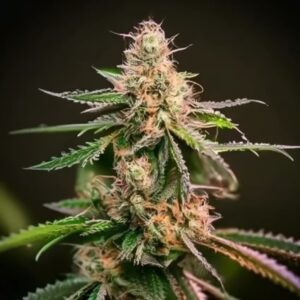

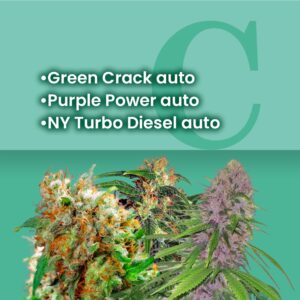
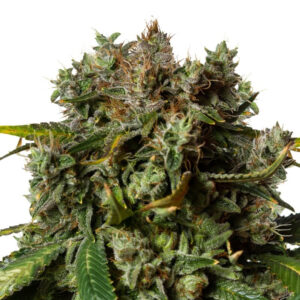


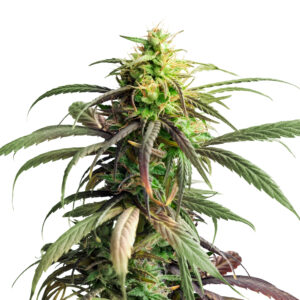






Related Posts
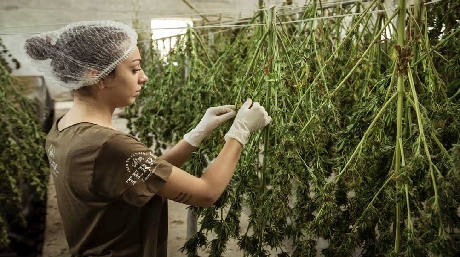
Harvesting your cannabis plant is one of the most exciting times for a grower. All your hard work and dedication are about to pay off. Are you excited yet?
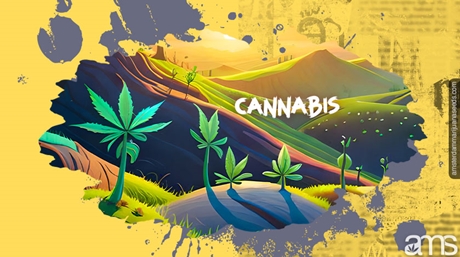
At AMS, we offer a wide selection of feminized marijuana seeds and expert advice to help you get started on your cannabis growing journey, no matter which method you choose. Order marijuana seeds today and start growing your own high-quality cannabis at home.
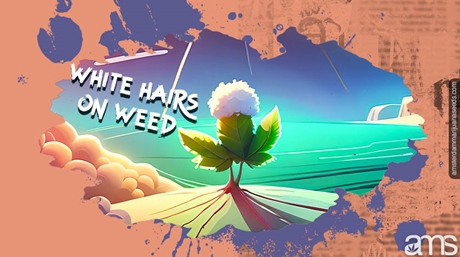
Did you know that weed has white hairs? If so, what are these white hairs? These are some of the questions we are going to answer in this blog post. So, pull your chair, and let’s learn some of the intricate parts of the weed plant you probably didn’t know.